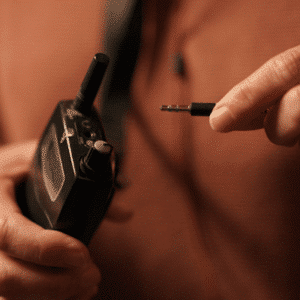Why “seeing” matters when stargazing in Broken Hill
Outback Astronomy
- Published on

When people visit us in Broken Hill for a spot of stargazing and, crucially, to experience gazing up at the huge and humbling outback sky with us at Outback Astronomy, they notice stars look sharp and steady high, compared to what they see down low on the horizon.
Teenagers talk of “party lights” and twinkling. Their Nans and Pops might not notice this so much. Most people do, however, observe differences in clarity of stars – whether it be due to altitude or height above the horizon, or atmospherics – particulate matter in the air, moisture content, whether the day was windy and blowing in dust from across Australia’s vast dry interior, or whether the jet stream may have been awakened by a cyclone brewing off the coast of Western Australia.
All these things can contribute to the viewing, at some time or other. The effect on the view can be dependent upon how sharp your vision is. In general, we all may notice from time to time a difference between a really clear night sky and one that makes stars twinkle more.
The answer lies in a lesser-known but crucial concept in astronomy – seeing.
What is “seeing”?
“Seeing” refers to the steadiness of Earth’s atmosphere — how much the air above us distorts the light from stars and planets as it travels through.
When you’ve seen a star twinkle — that’s seeing in action. The more turbulent the air, the more the starlight bends and shimmers on its way to your eyes or a telescope. While twinkling stars may seem romantic, they’re actually a sign of poor seeing when it comes to astronomy.
Good seeing means:
- Stars look like tiny, steady pinpoints
- Planets show more detail through a telescope
- Deep-sky objects are clearer and more crisp
Bad seeing makes even the best telescope give blurry results.
How seeing may be experienced in Broken Hill
Our location in remote western NSW offers big advantages.
- Low humidity, as dry air reduces atmospheric distortion.
- Stable temperatures at night and less turbulence in the air.
- Few artificial structures eg in cities these can cause heat plumes and turbulence and we don’t have this impact given our flat landscape.
- Minimal light pollution that doesn’t affect seeing directly, but it improves overall clarity.
- Cooler inland weather – starting from when daylight savings ends early April – helps settle down the air following any unstable weather systems in hot weather.
From late autumn, throughout winter and into the cooler evenings that persist throughout spring to early summer, the atmosphere tends to be calmer, giving us more nights with excellent seeing conditions. If you ask us when is a good time to think about stargazing out our way, we’d probably suggest any time of year from April through to December and take your chances during January, February and March.
Why seeing matters for you
Whether you’re just looking up with your eyes or peering through one of our telescopes, good seeing enhances your experience.
You’ll notice:
- Saturn’s rings are sharper.
- Jupiter’s cloud bands are clearer.
- Star clusters look like true sparkles, not blurry or fuzzy.
- The smart telescope will have sharper images.
How you can tell if seeing is good
Here’s a little tip. You can try this anywhere provided you have a view of low on the horizon and high above, and provided some stars are visible.
Look at the stars near the horizon. If they’re twinkling a lot, and stars higher up are steadier, that’s normal. But if even the stars overhead are also a little shaky, the seeing isn’t great.
Another method you could try is to watch a bright star that is high above through binoculars. If it dances around, you’re seeing atmospheric motion in real-time.
At Outback Astronomy, we chase the best seeing conditions so you don’t have to worry about it. If you have been texted by us with notice of a cancellation, and clouds did not seem that bad to you, then rest assured we have done our homework thoroughly. Some of the problem might have been the very high cirrus clouds, something visitors may encounter more in our area during the change over from summer to autumn, as the seasons change.
So let’s now dive into the hidden forces above our heads that shape the stargazing experience, even on clear nights.
Clear skies aren’t always clear – the hidden impact of clouds and the jet stream on stargazing
Sometimes, even when there’s no visible cloud blocking the night sky, the stars may still look blurry, soft or distorted.
The culprit? High, thin clouds and the jet stream. These impacts are invisible forces yet they can impact the view.
High clouds you can’t always see
At Outback Astronomy, we sometimes explain to guests that what’s overhead isn’t always visible to the naked eye. Cirrus clouds, for instance, are ice-crystal clouds at high altitudes. They don’t block light completely, but they scatter it just enough to create a hazy effect, often making stars look muted.
These high clouds can:
- Reduce transparency or the clarity of the air.
- Scatter light from the Moon.
- Interfere with telescope contrast.
Even if you’re not using a telescope, high cloud can dim constellations, making it harder for your eyes to adjust to the night sky.
The jet stream – an invisible agitator
Now, let’s talk about the jet stream — a powerful river of air that whips across the upper atmosphere, about 10–15 km above the ground.
The jet stream influences “seeing” conditions, not by blocking the view, but by stirring up the air. When it flows fast overhead, it creates ripples in the atmosphere, making starlight wobble and dance by the time it reaches your eyes.
In practice, this can mean:
- Blurry or shimmering planets.
- Stars that won’t focus clearly in a telescope.
- A frustrating experience, even if skies look cloudless
Broken Hill’s advantage
Here’s the good news – the daylight saving changeover can be a more reliable time to enjoy clear skies.
- The jet stream is usually calmer over inland NSW during these months
- Fewer heat-driven updrafts and less atmospheric turbulence
- High cloud is less frequent, especially during long, dry spells
We can’t predict every night perfectly, but on average, from April to the end of the calendar year, some of the clearest, most stable skies of the year can be enjoyed in Broken Hill. A small qualification – November may have some stormy weather during La Nina years!
In general though, with lower humidity and longer nights, our guests get a more immersive and intimate view of the night sky, from dazzling star clusters to deep sky objects like Omega Centauri and the Carina Nebula.
Just because it looks clear doesn’t always mean it is clear — but don’t worry. Here at Outback Astronomy, we work with nature, not against it. Whether it’s high clouds or a sneaky jet stream, we know what to expect — and how to make the most of your night under the stars.

Image: Western horizon in Broken Hill, the November sky. It can be a stormy month during a wet weather La Nina cycle. Mostly however, the conditions are great for gazing! Image by Outback Astronomy.


